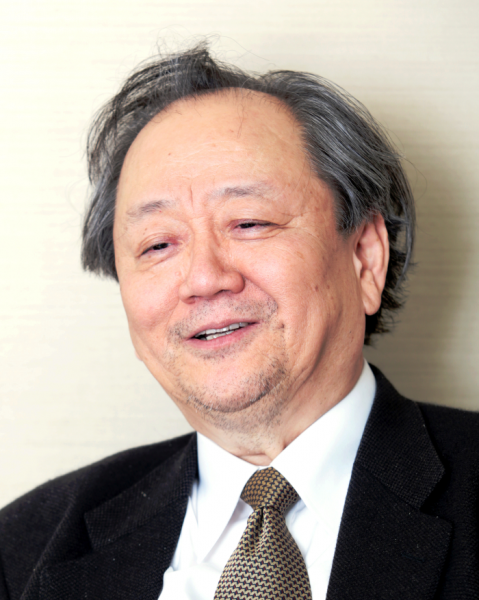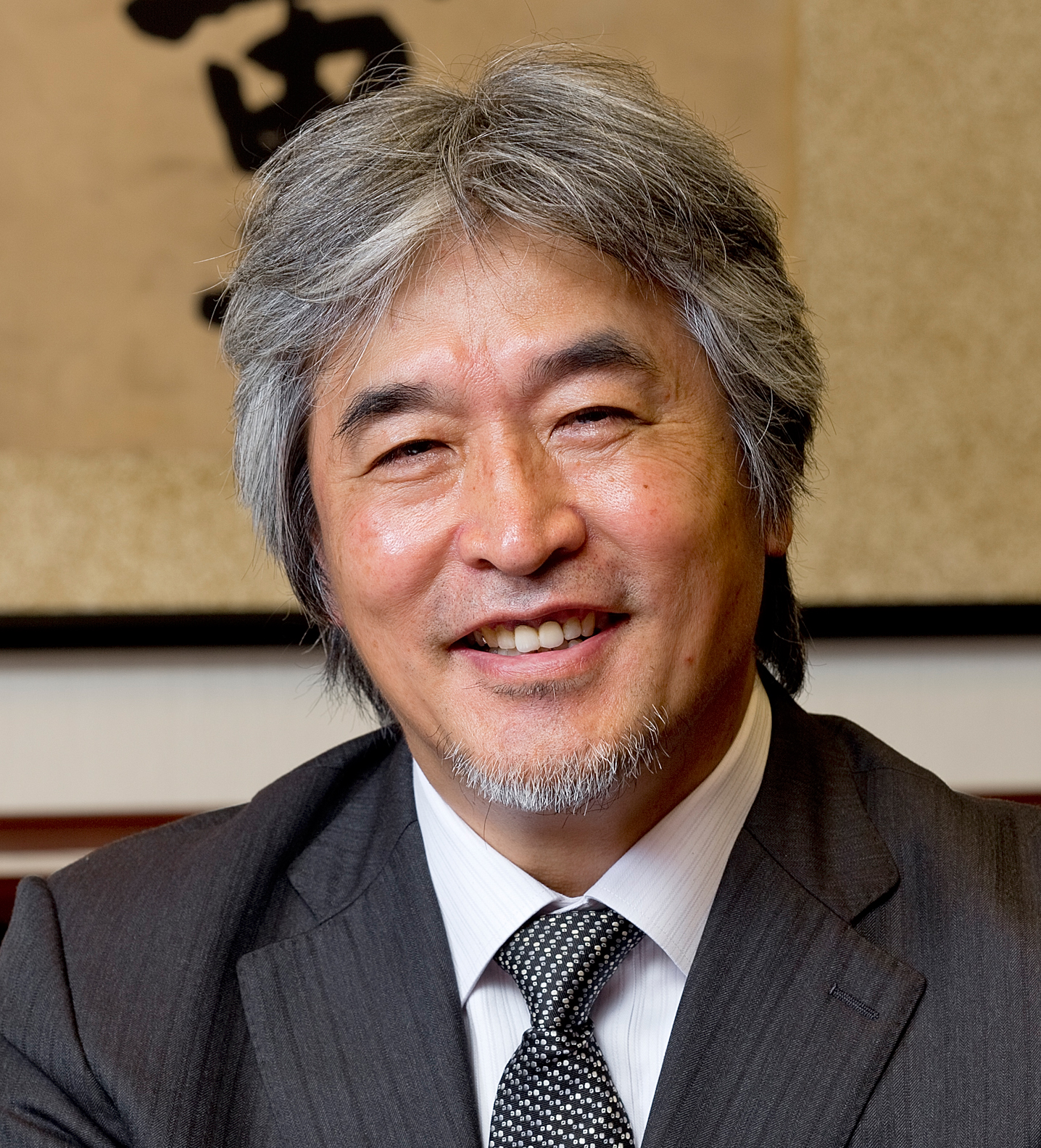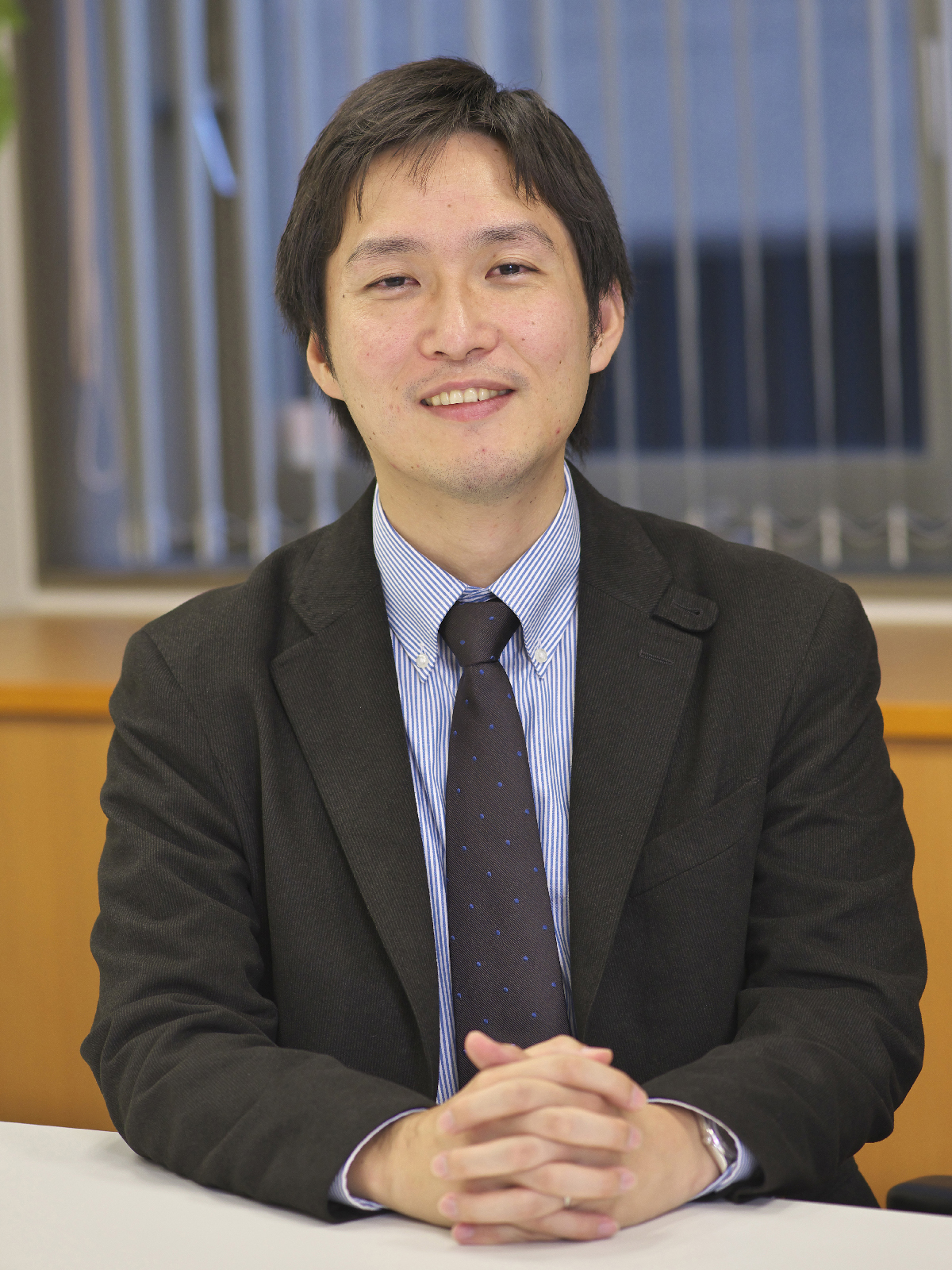2016 Kumamoto EarthquakeInterview: Tomorrow’s Temporary Housing
Ban Shigeru, Architect, Representative for the VAN (Voluntary Architects’ Network) NPO, a group of architects engaged in disaster relief activities with an Editorial staff of Kagaku

Figure 1: The paper tube partition system installed at the Mifune Sports Center in Kumamoto Prefecture. ©Voluntary Architects’ Network
Extending Readiness to All Japan. Repeated Problems.
Kagaku: You donated paper tube partition systems to evacuation centers for the Kumamoto earthquake. That was an extension of similar things you have done in the past, wasn’t it?
Ban Shigeru: Our work on the paper tube partition system (figure 1) started after the 2004 Chuestu earthquake in Niigata. A large number of systems were installed in North East Japan after the Great East Japan Earthquake, and we also donated systems after the recent Kumamoto earthquake. But our journey to this point was very hard; specifically, officials did not accept our ideas. They said it was because these things had not been done before. In the end, we built 1,800 units in fifty evacuation centers in North East Japan. But at first all the evacuation centers said no.
Of course, it is natural for officials not to allow people to do things that haven’t been done before. But before the next earthquake we got ready to make sure that the same thing wouldn’t happen the next time.
We did demonstrations during the regular disaster prevention days of various municipalities. These were seen by officials. This led to results. In January, last year we made a disaster prevention agreement with the city of Kyoto, where I teach in a university. According to this agreement, when evacuation centers are set up after a disaster, we will install these paper tube partition systems as standard. Meanwhile, the city will cover the costs. This January we made a disaster prevention agreement with Oita Prefecture, where I happened to be building the Oita Prefectural Art Museum. And more recently on July 26 we made a disaster prevention agreement with Setagaya Ward in Tokyo.
The agreement that we made with Oita Prefecture in January led to great results after the recent Kumamoto earthquake. Although we didn’t have an agreement with Kumamoto Prefecture, Oita is the neighboring prefecture and I visited the governor Hirose Katsusada two days after the earthquake. When I suggested that they supply the partition system to Kumamoto Prefecture as assistance from Oita Prefecture, he enthusiastically agreed. Governor Hirose made a telephone call to the governor of Kumamoto, Kabashima Ikuo. Thanks to that we were able distribute the systems without running up against the wall of doing something new. In fact, following that Cabinet Office staff who had been dispatched to Kumamoto noticed that it was a good idea and gave us support.
In North East Japan, we installed 1,800 units in fifty evacuation centers over three months, but in Kumamoto we installed 2,000 units in thirty-seven evacuation centers during just five weeks. It was thanks to the disaster prevention agreement with Oita Prefecture that we could make such quick progress.
So, in the future we would like to expand these disaster prevention agreements to cover the whole of Japan.
All those living in evacuation centers face both physical and mental hardship. Privacy is a natural human right, but not one available in evacuation centers. In particular, women are not able to change their clothes so it is uncomfortable for them.
This has been commented on whenever an earthquake disaster occurs. But even though each time people said how a lack of privacy was a problem for everyone in evacuation centers, government officials did not try to improve the situation. This time, I think we have reached the stage of a standard system that can be improved over time.
The authorities’ response was poor, wasn’t it?
No, it wasn’t that the authorities dealt with it poorly: they reached the limit of what they could do. Of course, it’s in the nature of government offices that they cannot do things which have never been done before. Because if something went wrong they would have a big problem. This isn’t a problem just in Japan. It’s the same everywhere in the world.
Immediately after the earthquake all the officials worked without sleep or rest. It would have been impossible for them to deal individually with each novel suggestion.
So, if the authorities acted poorly, I think it’s not how they dealt with things at the time, but afterwards. After a disaster improvements really must be made. That’s where they are lazy.
It is important to reflect on mistakes, think what to do next, then share that at a national level and prepare. The problem was that they were not doing that. Ever since the Great Hanshin Awaji Earthquake the lack of privacy issue has been reported in the news each time. The problem was that they did nothing to improve the situation.
Many paper tube partition systems were installed in North East Japan, and quite a large number were also distributed in Kumamoto. Next, we are aiming for the whole of Japan.
Bringing Innovation to Temporary Housing

Figure 2: The interior of a 9-tsubo (approx. 30 m2) type three-story temporary housing block made from shipping containers in Onagawa-cho, Miyagi Prefecture. ©Hiroyuki Hirai
We’ve also had a go at temporary housing. After the Great East Japan Earthquake, we built temporary housing in the town of Onagawa, Miyagi Prefecture (figure 2). You would think that people would want to leave temporary housing quickly, but residents want to keep living in our Onagawa temporary housing even if they have to pay rent.
Usually the prefecture would place all the orders for temporary housing, but the situation in Miyagi was so terrible that the prefecture transferred authority for ordering to the town of Onagawa itself. As Miyagi Prefecture did not have enough land, they couldn’t erect sufficient numbers of standard government one-story houses. The mayor of Onagawa at the time, Azumi Nobutaka, made a strong decision and accepted my proposal. As a result, we were able to build the very first three-story temporary housing block.
For Kumamoto this time the order came from the prefecture so we were not able to install anything special. But even though it is only 10 houses, we have begun work on constructing wooden temporary housing that is comfortable to live in. (Figure 3. They are planned for completion in Mifune this summer [completed in August 31]).
We could do this thanks to our track record to date, our relationships with people from evacuation centers and government offices, our cooperation with professors at Kumamoto University, and the desire of people in the prefecture and town to make it happen.

Figure 3: Illustration of a wooden temporary housing unit built in Mifune, Kumamoto Prefecture.
The wooden temporary housing does not need to be assembled by carpenters as they are made only with plywood panel frames. They can be put up by anyone, and our prototypes were erected by students.
The two issues for temporary housing are always heat insulation and that everything can be heard from the houses next door. Therefore, we included storage fittings, and this furniture is part of the structure itself. As standard temporary housing hardly has any storage space, the houses are full of objects. We improved the housing by including adequate storage fittings, producing a solid structure with the furniture itself part of the structure. In addition, residents cannot hear noise from next door.
Although it is only ten houses, I think it is a significant experiment. We are now thinking about the next stage.
You also provided assistance after the Ecuador earthquake (16 April 2016).
I visited the earthquake zone during the May vacation period. With the help of the Ecuadorian embassy in Tokyo, local architects and people from local universities gathered together, and we created a team. There are still regions without aid and with so-called tent cities. Right now, together with Keio University (where Ban has a research office) and local architects and university students, we are working on preparations for building temporary shelters in these locations.
Will these be built in a different way?
They must all be built to suit those areas, with available local materials, and to match the economic level of those regions. The quality can’t be either too high or too low.
I experienced that powerfully after the 1999 earthquake in Turkey. We erected temporary housing similar to that we’d used in Kobe (known as “Paper Log Houses”: walls made with paper tubes and a ceiling/roof made from tent material). It was exactly four years after the Kobe earthquake at that time, and all the temporary housing from Kobe was being dismantled. There was also a great global enthusiasm for recycling, so the Japanese government decided to use a Self-Defense Forces ship to donate the dismantled housing to Turkey.
I thought that the Japanese government had done a good thing and went to Turkey to see. However, and this is a mistake that Japan often makes, it is useless to just give quality items without knowledge of the local situation. Its level was so much higher than the temporary housing the Turkish government was building that it would cause unfairness if it were given to ordinary people. So it was only issued to the families of the military and government. In other words, Japanese tax money ended up being used to build houses for the Turkish elite. That’s not much use to ordinary people, but it was completely unreported in Japan,
It is better to see things on the ground with your own eyes, use local materials as far as possible, and provide work for local people. That’s why it is no good always sending high-quality items as assistance. We must look at what materials are available and at the standard of living before sending goods. And that’s why they must be different every time rather than standard issue.
Although we will be using cardboard tubes for the temporary housing in Ecuador this time, the material is cheap and available in factories all over the world. The floor base will be made from locally available beer cases, while bamboo (a material often used locally) will be used for the outer walls.
Japan vs Overseas: Two Different Systems of Response
Using prefab temporary housing to respond to natural disasters in Japan will become more difficult. There is no demand for these in ordinary times, so were a natural disaster on the scale of the Great East Japan Earthquake to occur, some worry that it would not be possible to deal with it.
That’s why we are developing a new type of temporary housing with manufacturers. We are building a factory overseas, which will both create employment in a developing country and raise the level of housing during times of non-emergency. Also, it is set up so that the housing built will be suitable for either Japan or nearby countries when a disaster occurs. This is the kind of new manufacture and distribution system we are trying to establish. We plan to announce the factory around next spring.
The construction material will be panels made from styrofoam coated with FRP (fiber-reinforced plastic.) FRP is often used to make boats and other vessels. This panel system offers both heat insulation and strength, and it can be made in different sizes. That it can be mass produced and freely sized is an advantage. However, a factory is necessary.
The plywood panels we used for temporary housing in Kumamoto were made without a factory, so these are two completely different systems. The FRP system is designed for mass production. The plywood panel system is one that does not require a factory or specialist workers to erect it in an emergency.
(Edited from a recording on 27 July 2016)
Translated from “Tokushu-2016 Kumamoto Jishin: Korekarano Kasetsu-jutaku no tameni (Special Feature: 2016 Kumamoto Earthquake — Interview: Tomorrow’s Temporary Housing),” Kagaku, September 2016, pp. 0930-0933, ©2016 by Shigeru Ban. Reprinted by permission of the author c/o Iwanami Shoten, Publishers. [September 2016]




